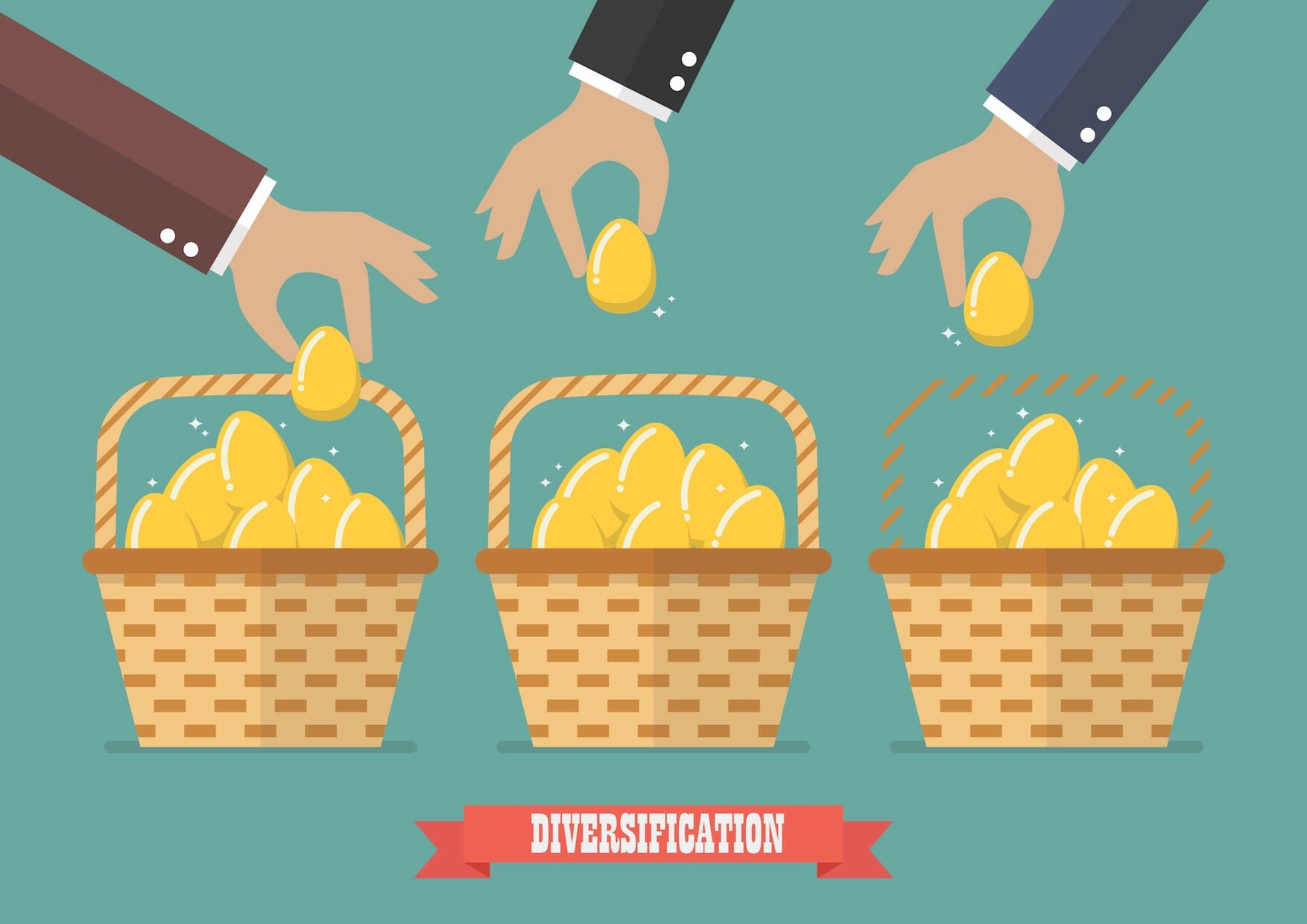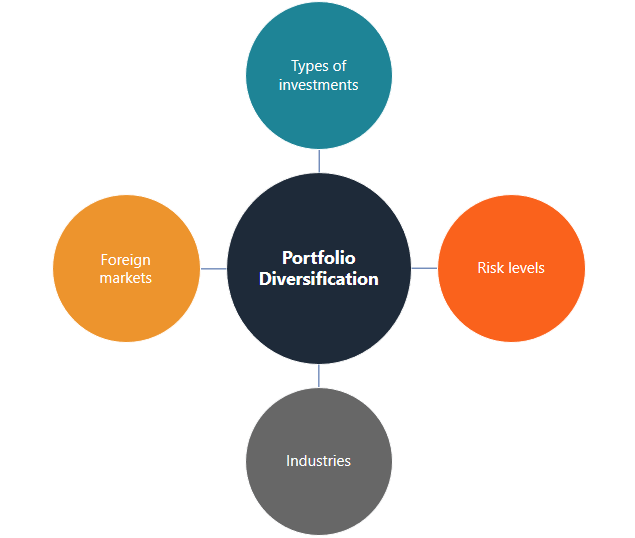
Diversification
A technique of allocating capital to a mix of different investments
What is Diversification?
Diversification is a technique of allocating portfolio resources or capital to a mix of different investments. The ultimate goal of diversification is to reduce the volatility of the portfolio by offsetting losses in one asset class with gains in another asset class. A phrase commonly associated with diversification: “Do not put all your eggs in one basket.”
Having “eggs” in multiple baskets mitigates risk; if one basket breaks, not all eggs are lost.

Diversification and Unsystematic Risk
Diversification is primarily used to eliminate or smooth unsystematic risk. Unsystematic risk is a firm-specific risk that affects only one company or a small group of companies. Therefore, when a portfolio is well-diversified, investments with a strong performance compensate for the negative results from poorly performing investments.
However, diversification does not usually affect the inherent or systematic risk that applies to the financial markets as a whole.
One way to think about the two basic types of risk is that one refers to the specific risks of an industry or individual firm, while the other refers to risk factors in the overall economy. Unsystematic risks can usually be controlled or mitigated, but systematic risk involves fundamental economic factors that are largely outside of any one individual company’s power to control.
Learn more about Systematic and Unsystematic Risk on CFI’s CAPM page.

Portfolio Diversification
Portfolio diversification concerns the inclusion of different investment vehicles with a variety of features. The strategy of diversification requires balancing various investments that have only a slight positive correlation with each other – or, better yet, an actual negative correlation. A low correlation usually means that the prices of the investments are not likely to move in the same direction.
There is no consensus regarding the perfect amount of diversification. In theory, an investor may continue diversifying his/her portfolio virtually infinitely as long as there are available investments in the market that are not correlated with other investments in the portfolio.
An investor should consider diversifying his/her portfolio based on the following specifications:
- Types of investments: Include different asset classes, such as cash, stocks, bonds, ETFs, options, etc.
- Risk levels: Investments with dissimilar levels of risk allow the smoothing of gains and losses.
- Industries: Invest in companies from distinct industries. The stocks of companies operating in different industries tend to show a lower correlation with each other.
- Foreign markets: An investor should not invest only in domestic markets. There is a high probability that the financial products traded in foreign markets are less correlated with products traded in domestic markets.
Nowadays, index and mutual funds, as well as ETFs, provide individual investors with a simple and inexpensive instrument for creating a diversified investment portfolio.
Additional Resources
Thank you for reading CFI’s guide to Diversification. To learn more about related topics, check out the following CFI resources:
